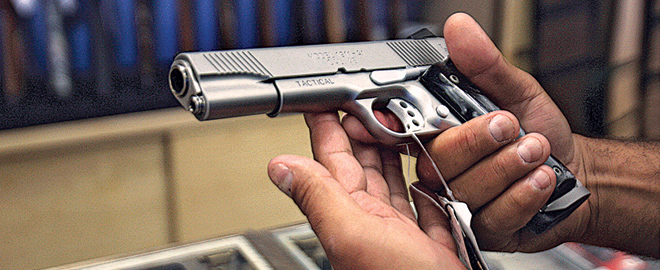‘You can’t outsmart crazy’—or can you?
Andrew Potter on the only real cause of the Arizona assassination attempt
Share

It is typical of the political cowardice of the Democratic party, and of the intellectual impotence of the American left in general, that even when something so blatantly political as the shooting of one of their own members of Congress occurs, it finds itself in full retreat, unwilling to try to capitalize on the tragedy.
The pattern is always the same. Whenever someone shoots up a school, or a church, or a supermarket in the U.S., conservatives invariably use it as the occasion to engage in a rhetorical re-enactment of the American Revolution. The usual arguments against gun control are trotted out—guns don’t kill people, the killer was insane—while the left, desperate to avoid being baited as anti-American, quakes in fear.
There were some early, ham-handed attempts by liberals at tieing the shooting of Gabrielle Giffords to the Tea Party, to Sarah Palin, or to the climate of vitriol and hate that has consumed American politics since Obama was elected. But within a few days they were conceding argument after argument to conservatives. The rout was completed on Monday night when Jon Stewart, the arbiter-in-chief of smug centrism, handed everyone their Twitter-points for the next day. “Boy, would it be nice to be able to draw a straight line of causation from this horror to something tangible,” he said. But unfortunately, “You cannot outsmart crazy”.
As it happens, “you can’t outsmart crazy” is the preferred conservative framing of the Arizona shootings. Writing for the National Review Online, the historian Victor David Hanson mocked any attempt to tie Jared Lee Loughner’s rampage to anything the right has said or done. Loughner, he said, “more likely fit the profile of an unhinged killer like Ted Kaczynski” than that of some rabid partisan or cold-blooded political assassin. Thanks to the “political vultures” on the left, we are suddenly back in “a 1963 mood of blaming politics for deranged shootings.”
It is true that Loughner is almost certainly mentally ill. And no, you probably can’t draw a “straight line of causation” from the Tea Party to the shootings. In these cases, you almost never can. But it does not follow that Loughner was not abetted, or at least encouraged, by the politics of the right. So let’s ask a different question: why was a deranged young man able to buy a semi-automatic handgun? We’re talking, after all, about someone who was turned down by the U.S. Army for a job in the gun-carrying business, but who merely had to walk down to the local sporting goods shop to pick up a Glock.
Everyone knows there are lots of guns in America. Two hundred million of them in private hands is the usual estimate, about half of them handguns, making the United States far and away the most densely armed country on the planet.
Less well known is that the U.S. also has, by far, the highest rates of serious mental illness in the world. A 2004 study by the World Health Organization found that 26 per cent of Americans had some form of mental disorder, including depression, anxiety, and substance abuse. The only country anywhere near this level was Ukraine, at 21 per cent.
It is fine for gun nuts to cite chapter and verse from the U.S. constitution, but at some point you have to accept that political principles, and policies that flow from them, need some rational connection to social realities. The math is pretty simple: lots of guns plus lots of crazies equals lots of crazies with guns, yet conservatives act as if the massacre of American citizens by a deranged individual is akin to an earthquake: destructive to be sure, but completely beyond our control.
It isn’t. In a society where mentally ill individuals regularly go on gun rampages, you can do one of two things. You can take steps to keep guns away from them, or you can make it easier for them to get the help they need. Ideally you would do both, but for pro-gun anti-health-care conservatives, the better solution is to do neither. Instead, guns are made as accessible as possible, while basic mental health care is unavailable to those who need it most but can least afford it.
In one of the more darkly perceptive episodes of The Simpsons, Homer decides to buy a weapon after a wave of violence hits Springfield. He heads to the local gun shop, only to be told he has to wait five days for a background check. In a response that pretty much sums up the conservative attitude toward gun control in the United States, Homer whines, “Five days? But I’m mad now!”
Unlike Homer, Jared Loughner walked into his local gun shop and walked right out with a pistol, suggesting that wherever the fictional Springfield is, it’s not Arizona, ground zero of crazy conservative politics. If the right is willing to forget that, the left shouldn’t.
Maybe the tenor of debate has already started to change. A Republican congressman, Peter King, has said he will introduce legislation banning guns from being carried within 1,000 feet of a federal official. But the right always makes these sorts of concessions, and they are always temporary. In 1994, the Clinton administration passed the federal assault weapons ban, mandating no gun could have a magazine that holds more than 10 rounds. The ban was allowed to expire in 2004 by Congress. The gun that Loughner used to spray the crowd, killing six and wounding 14 others, had a 31-round magazine.